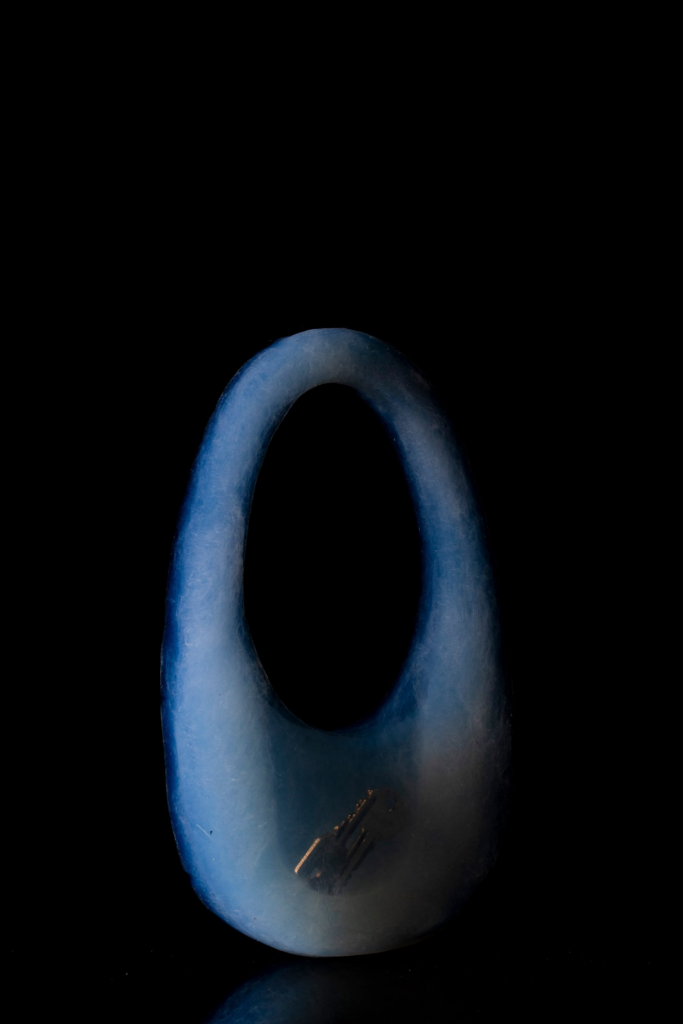

“Coperni has released a bag made of 99 per cent air.
Greek researcher and visual artist Ioannis Michaloudis has created the Air Swipe bag for fashion brand Coperni using NASA-produced silica aerogel that was developed to ‘catch stardust’.
The lightweight bag was unveiled at Coperni’s F/W 2024 runway show during Paris Fashion Week.
It is the ‘lightest sold [material] on planet Earth’. The material – which has a chemical composition similar to gas – forms the shell of the bag, while the interior is air.
This means that the total volume of the bag consists only of one per cent solid material.
It is formed in a stainless steel mould with a ‘supercritical’ drying process, which uses specific temperatures and pressures to transform liquids into glass.
Michaloudis said that the bag is delicate but not fragile and that the material can handle pressure of 4,000 times its weight and heat up to 1,200 degrees Celsius.
“It can withstand three times the speed of a bullet,” Michaloudis told Dezeen.
‘And that’s why [NASA] has selected the material to catch stardust,’ he continued, referring to the cells attached to deep-space satellites for collecting high-speed space materials.
The light-blue colour of the material comes from the ‘nanopores’ on its volume, which Michaloudis compared to the sky of the planet.” (Dreith 2024).

Coperni as a whole interests me because they strive to incorporate innovative materials and processes. The world of high fashion is often dismissed because only the economically privileged have any buying-power in the industry; high fashion has no purpose outside of consumerism. However, the Air Swipe bag shows transfer of knowledge between the world of pop culture and the world of science & technology. The two inform each other often in unexpected ways.
While NASA’s purpose for using silica aerogel is for furthering our understanding of space, Coperni has created a new context and function for the material. The Air Swipe bag provokes the following questions:
From a product design standpoint, can we create consumer goods with a fraction of solid material?
From a sustainability standpoint, is this an answer to cutting down on plastic production and therefore plastic waste?
From an architectural standpoint, could a material as lightweight and durable as aerogel change the way we construct building infrastructure?
Lastly, from a realistic standpoint, the large scale manufacture of aerogel is no doubt costly. Even if aerogel were to be integrated into reular consumer goods, the pricepoint would not be attainable for the average consumer. Still, the Air Swipe begs today’s designers to consider, how can we reduce material to prevent the accumulation of waste?
Dreith, B. (2024, March 14). Coperni unveils air swipe bag made of 99 per cent air. Dezeen. https://www.dezeen.com/2024/03/12/coperni-air-swipe-bag-nasa-aerogel/




